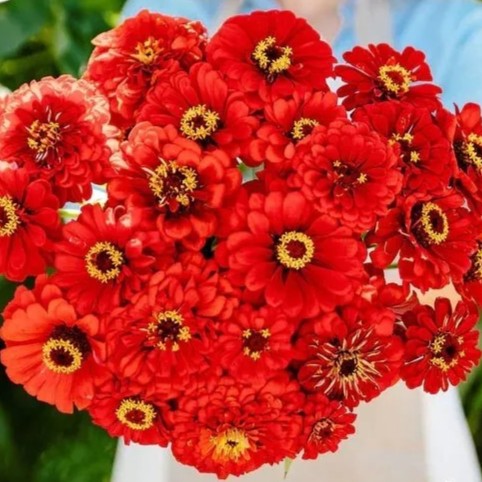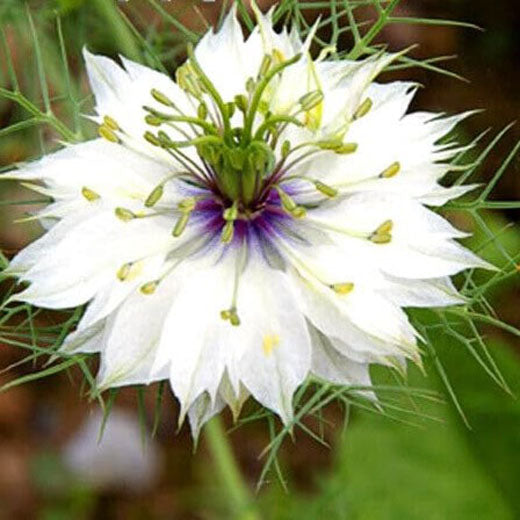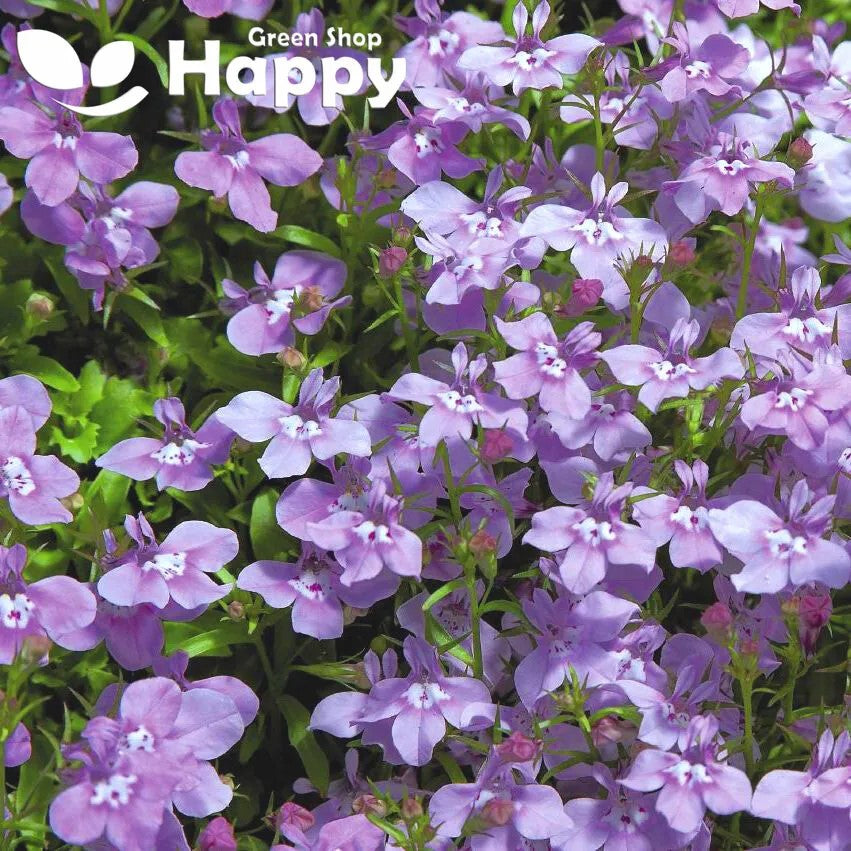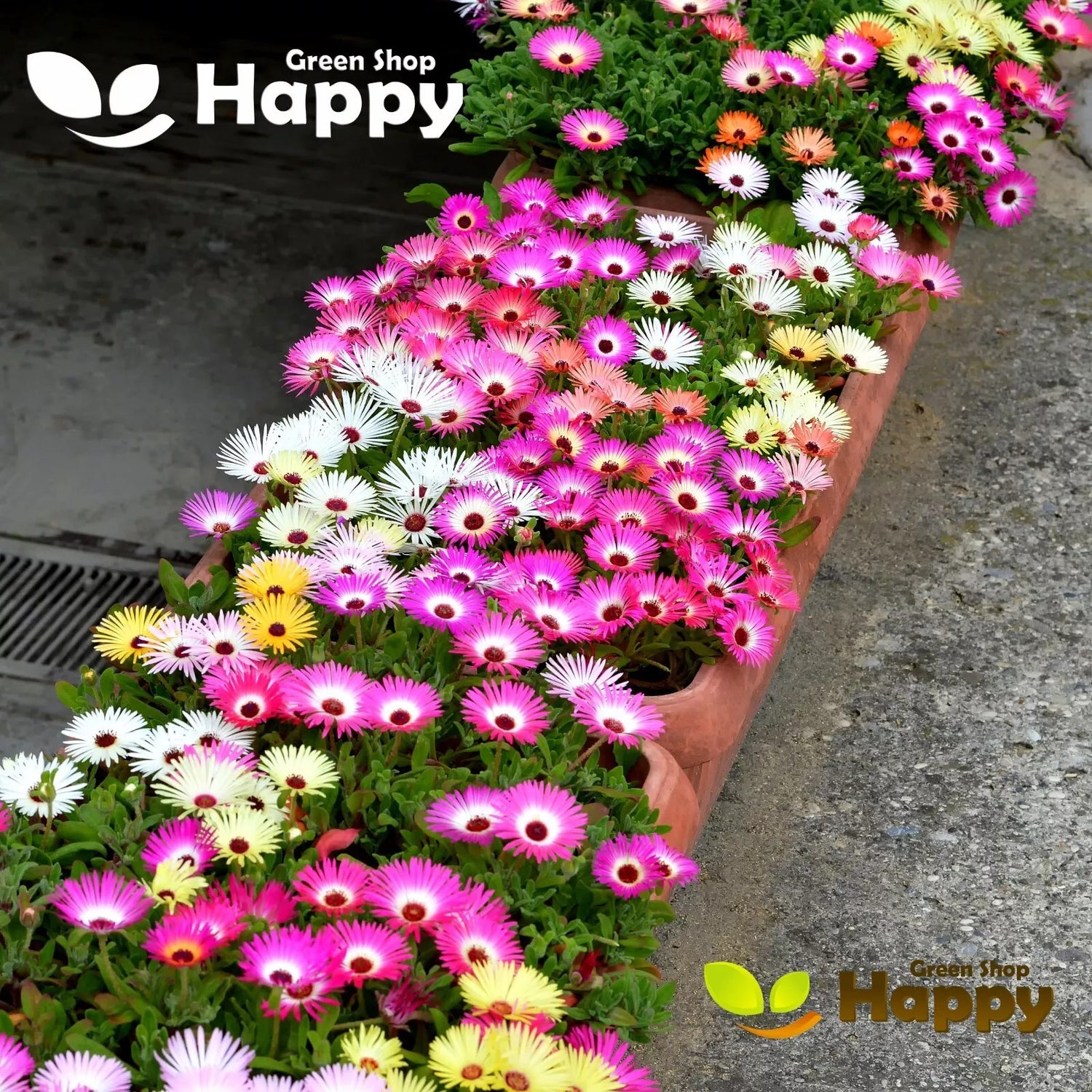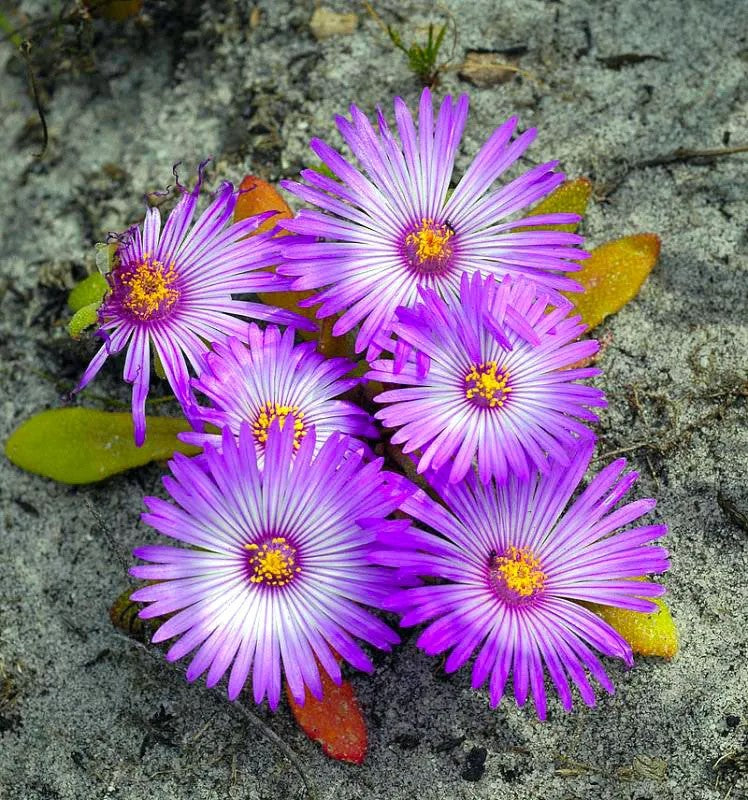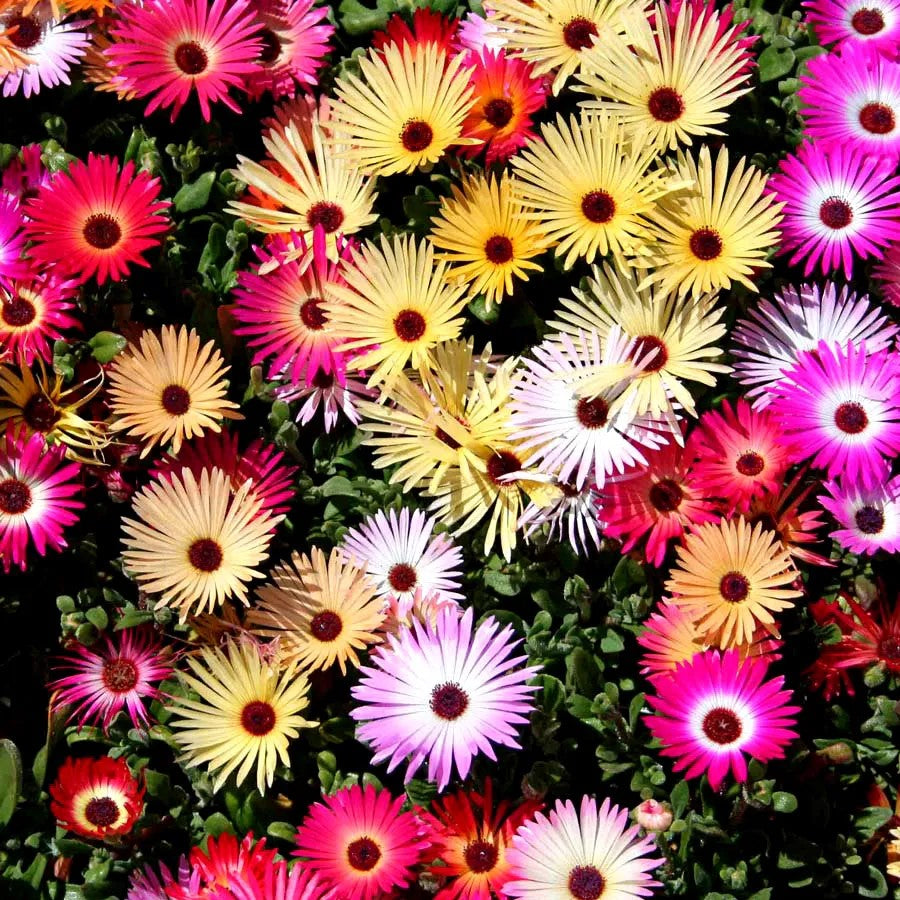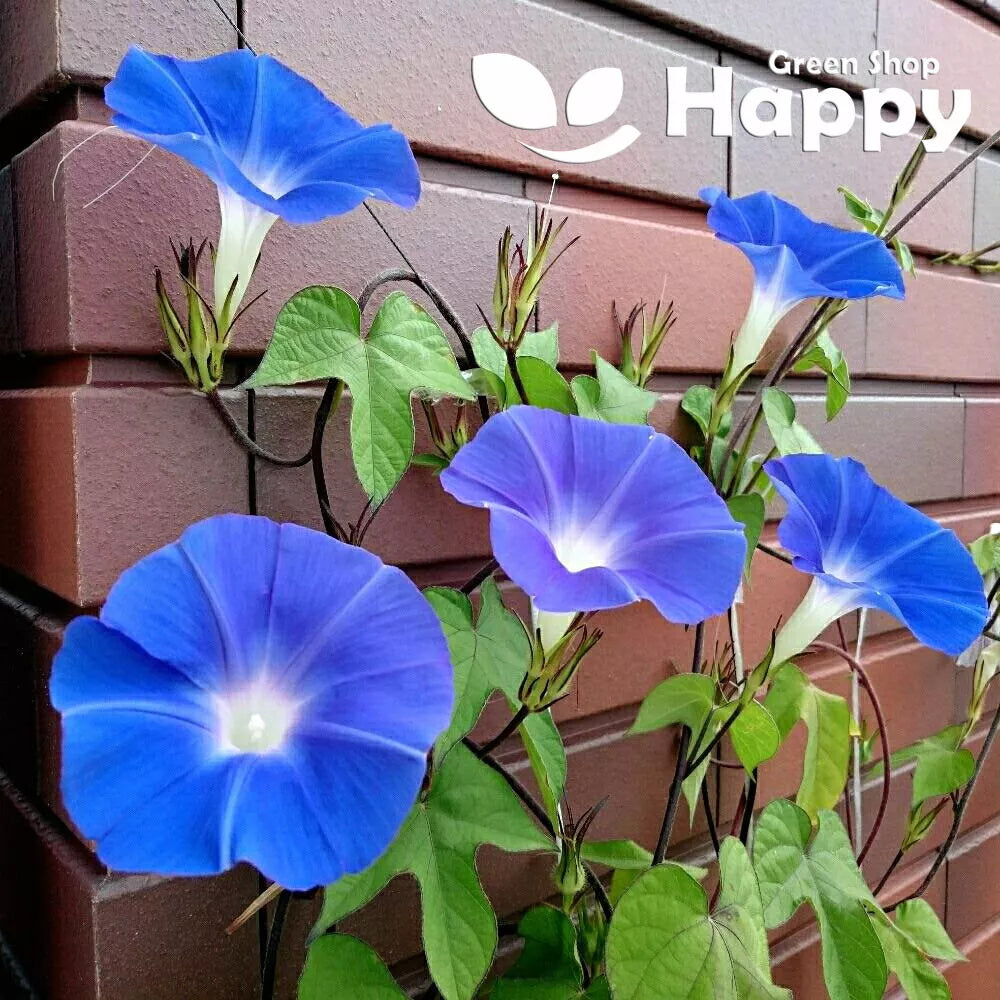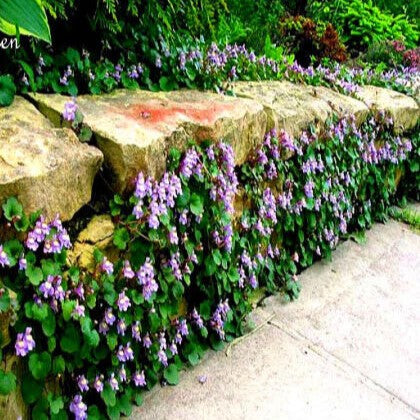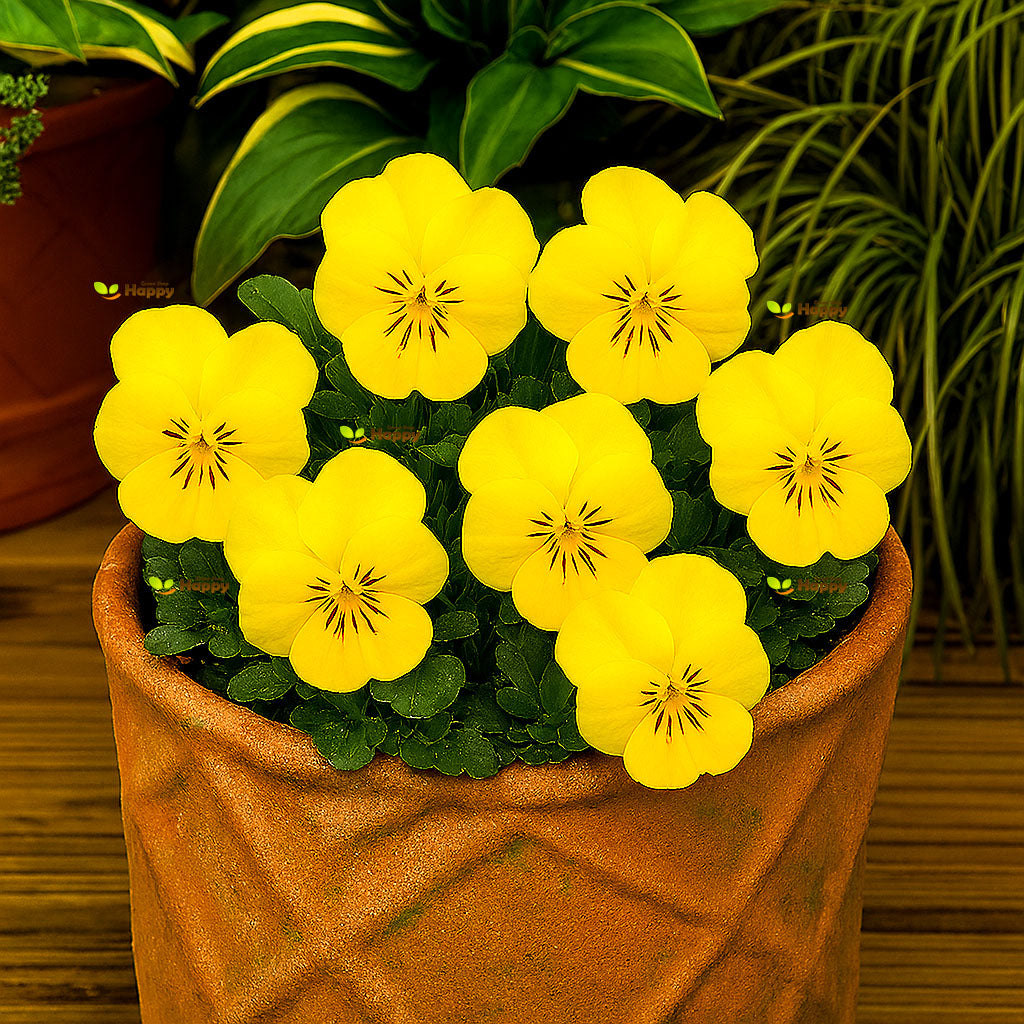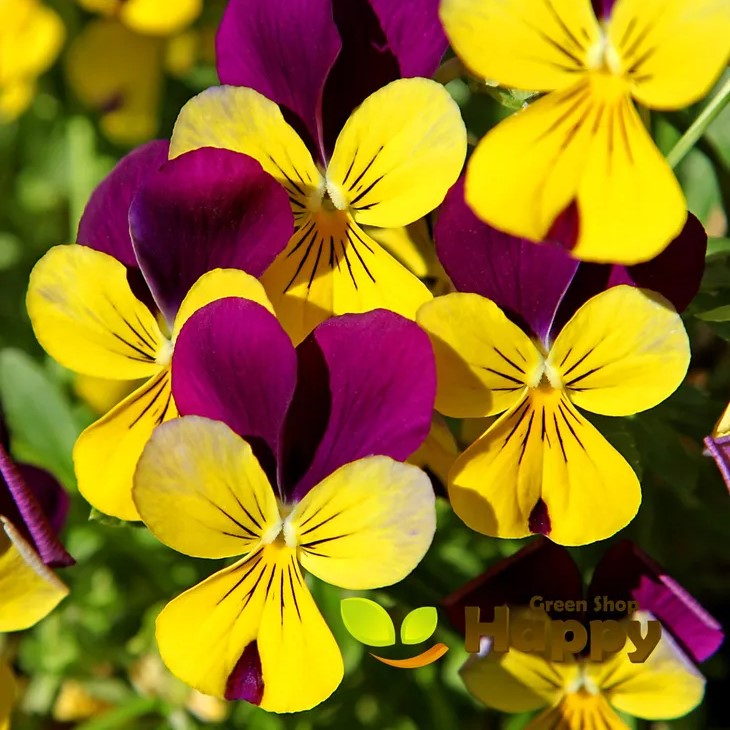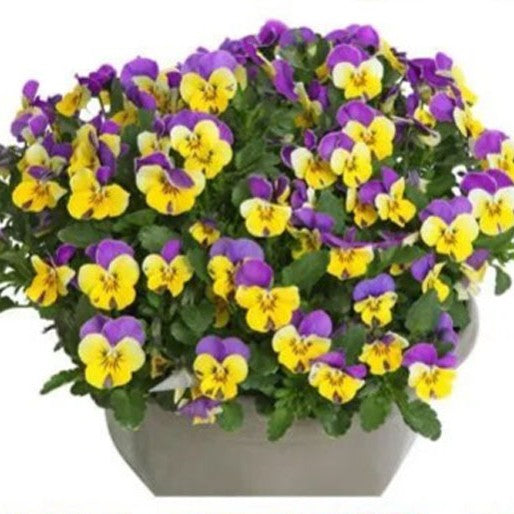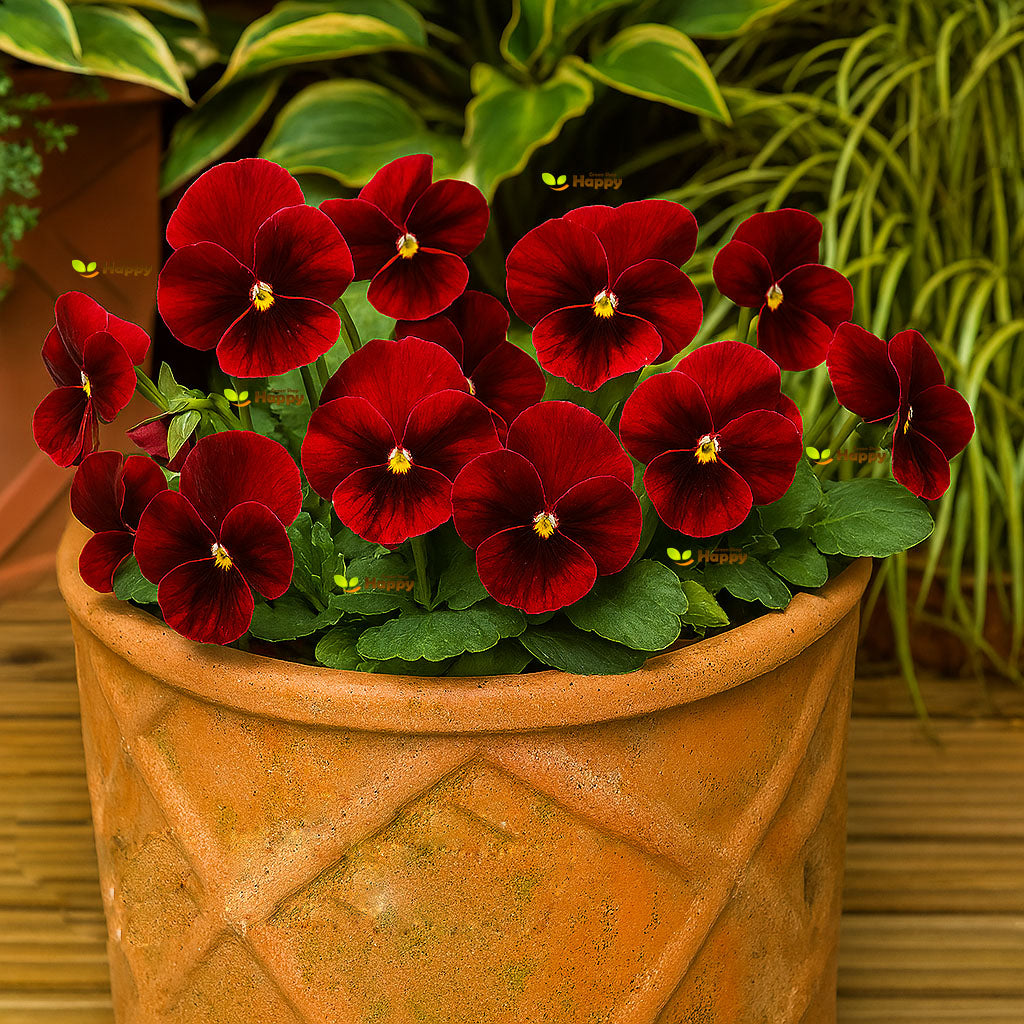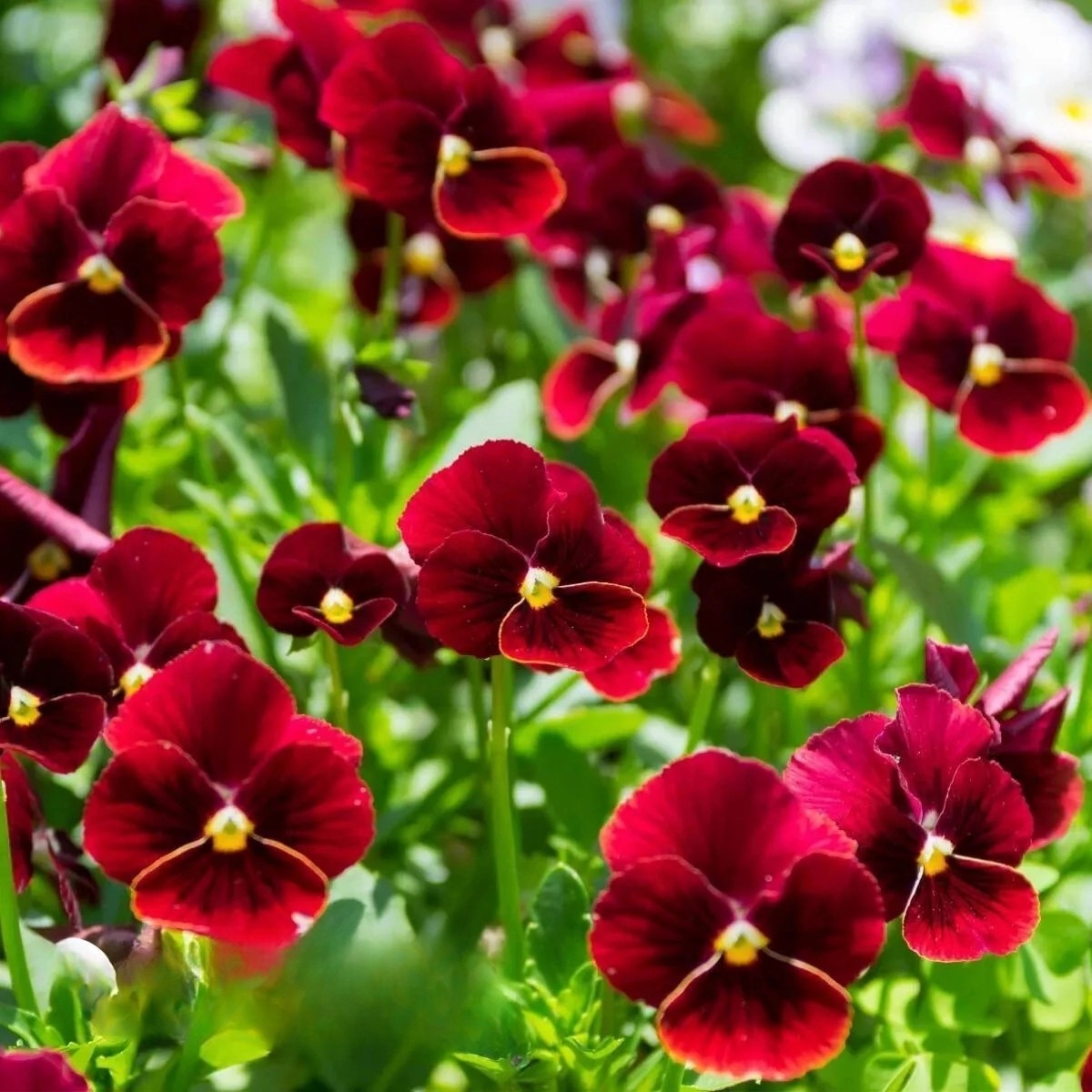Sort by:
128 products
128 products
Love-in-a-Mist 'Miss Jekyll' Double Mix Seeds (Nigella damascena)
Love-in-a-Mist 'Miss Jekyll' Double Mix is an elegant annual with double, papery blooms in shades of blue, white, and pink, surrounded by delicate feathery foliage. Its airy, cottage-garden charm makes it perfect for borders, containers, and cutting gardens. Loved for its intricate blooms and long flowering season, it adds whimsical beauty to any garden.
What Makes It Special
-
Double, papery blooms in a mix of blue, white, and pink
-
Delicate, feathery foliage creates an airy, cottage-garden effect
-
Long-flowering and easy to grow
-
Attracts pollinators and makes excellent cut flowers
Key Features
-
Botanical name: Nigella damascena
-
Variety: 'Miss Jekyll' Double Mix
-
Seed count: Approx. seeds per pack
-
Height/Spread: 30–40 cm tall, 15–20 cm spread
-
Position: Full sun; fertile, well-drained soil
-
Flowering period: June–September
Ideal For
-
Borders and cottage gardens
-
Containers and patio displays
-
Cutting gardens and floral arrangements
-
Pollinator-friendly gardens
Sowing Instructions
-
When to sow: March–May outdoors; February–April indoors
-
How to sow:
-
Sow seeds thinly on the surface of moist seed compost and press lightly; do not cover
-
Germination occurs in 10–14 days at 15–20°C
-
-
Transplanting: Thin seedlings to 15–20 cm apart after germination
-
Care: Water moderately; deadhead for prolonged flowering
Love-in-a-Mist 'African Bride' – Seeds (Nigella damascena)
Grace your garden with the delicate beauty of Love-in-a-Mist 'African Bride'. This unique variety produces pure white blooms accented by dark, contrasting centers and fine, feathery foliage. Elegant and easy to grow, it’s perfect for borders, cutting, and drying.
Why Grow 'African Bride'
-
Pure white blooms with striking dark centers
-
Long-lasting as cut or dried flowers
-
Easy to grow with airy, fern-like foliage
-
Attracts pollinators
Key Features
-
Type: Hardy annual (Nigella damascena)
-
Height: 45–60 cm
-
Flowering: June–September
-
Position: Full sun
-
Uses: Borders, cut flowers, dried arrangements
Ideal For
-
Cottage gardens and wildflower borders
-
Summer bouquets and wedding flowers
-
Adding soft texture to plantings
-
Wildlife-friendly gardens
Sowing & Growing
-
Sow outdoors: March–May or August–September
-
Direct sow into prepared soil, thin as needed
-
Germination: 10–20 days
-
Space plants 15–20 cm apart
-
Prefers well-drained soil in full sun
Lobelia ‘Twilight’ Lilac – Seeds
(Lobelia erinus)
Lobelia ‘Twilight’ Lilac is a compact and trailing variety that produces masses of soft lilac blooms throughout summer. Its delicate flowers create a stunning carpet of color, making it perfect for hanging baskets, window boxes, and edging borders. Easy to grow and long-flowering, it adds a graceful, airy charm to any garden display.
Why Grow Lobelia ‘Twilight’ Lilac?
-
Masses of soft lilac blooms all summer
-
Compact and trailing growth habit
-
Perfect for baskets, containers, and edging
-
Easy to grow and low-maintenance
Key Features
-
Type: Half-hardy annual
-
Height: 10–15 cm
-
Flowers: June–September
-
Position: Full sun to partial shade
-
Soil: Moist, well-drained
Ideal For
-
Hanging baskets and window boxes
-
Edging borders and rockeries
-
Container planting
-
Adding soft lilac tones to garden displays
Sowing & Growing
-
Sow indoors: February–April on the surface of moist compost (do not cover seeds)
-
Germination: 14–21 days at 18–24°C
-
Transplant seedlings into trays when large enough to handle
-
Harden off before planting outdoors after last frost
-
Spacing: 10–15 cm apart
Livingstone Daisy Mixed – Seeds (Dorotheanthus bellidiformis)
The Livingstone Daisy Mixed is a dazzling carpet-forming annual that produces masses of daisy-like blooms in vibrant shades of pink, red, orange, yellow, and white. The flowers open wide in full sunlight, creating a striking display over their low-growing, succulent foliage. Perfect for hot, dry, sunny spots, this cheerful mix brightens up any summer garden with its jewel-like colors.
What Makes It Special
-
Brilliant mix of jewel-toned daisy flowers
-
Thrives in poor, dry soils and full sun
-
Excellent ground cover for summer displays
-
Compact, trailing habit ideal for edging and containers
Key Features
-
Botanical name: Dorotheanthus bellidiformis
-
Common name: Livingstone Daisy / Ice Plant
-
Variety: Mixed colors
-
Seed count: Approx. seeds per pack
-
Height/Spread: 10–15 cm tall, spreading up to 20 cm
-
Position: Full sun; well-drained soil
-
Flowering period: Summer (June–September)
Ideal For
-
Bedding and edging
-
Rockeries and gravel gardens
-
Containers and window boxes
-
Drought-tolerant displays in sunny spots
Sowing Instructions
-
When to sow: February–April indoors, or May outdoors after frost
-
How to sow:
-
Sow seeds on the surface of fine, moist compost; do not cover (light aids germination)
-
Keep at 18–20°C; germination in 10–21 days
-
-
After germination:
-
Transplant seedlings when large enough to handle
-
Harden off and plant outdoors 10–15 cm apart in sunny, free-draining soil
-
Large-Flowered Dwarf Morning Call Mixed – 50 Seeds (Ipomoea nil)
The Large-Flowered Dwarf Morning Call Mixed (Ipomoea nil) is a charming annual producing vibrant, trumpet-shaped flowers in a mix of colors. Compact and low-growing, it’s ideal for pots, containers, or small garden beds, bringing a burst of color to sunny spots throughout summer. Fast-growing and easy to maintain, it’s perfect for brightening any garden space.
Why Grow "Morning Call Mixed"
-
Large, trumpet-shaped flowers in mixed vibrant colors
-
Compact, dwarf habit perfect for small spaces
-
Long flowering season during summer
-
Easy to grow and maintain
Key Features
-
Type: Annual (Ipomoea nil)
-
Height: 25–35 cm
-
Flowering: June–September
-
Position: Full sun
-
Uses: Containers, pots, small garden beds, borders
Ideal For
-
Container planting and window boxes
-
Small garden beds and borders
-
Adding vibrant summer color
-
Pollinator-friendly plantings
Sowing & Growing
-
Sow indoors: February–April in seed trays
-
Sow outdoors: April–May after frost
-
Germination: 7–14 days at 18–22°C
-
Thin seedlings to 20–25 cm apart
-
Prefers full sun and well-drained soil
-
Water moderately and remove spent flowers to prolong blooming
Kenilworth Ivy – Seeds (Cymbalaria muralis)
Kenilworth Ivy (Cymbalaria muralis) is a charming trailing perennial, perfect for walls, rockeries, and crevices. Its delicate ivy-like foliage is adorned with small violet-lavender flowers that bloom freely throughout the summer. Hardy, low-maintenance, and self-seeding, it creates a natural, cascading effect in the garden.
Why Grow "Kenilworth Ivy"
-
Cascading perennial with trailing habit
-
Violet-lavender flowers all summer
-
Perfect for walls, cracks, and rockeries
-
Hardy, self-seeding and easy to grow
Key Features
-
Type: Perennial (Cymbalaria muralis)
-
Height: 5–10 cm, trailing habit
-
Flowering: May–September
-
Position: Sun or partial shade
-
Uses: Rockeries, walls, ground cover, containers
Ideal For
-
Stone walls and paving crevices
-
Rock gardens and shady spots
-
Naturalistic ground cover
-
Containers and hanging baskets
Sowing & Growing
-
Sow indoors: February–April in trays
-
Sow outdoors: April–June in final position
-
Germination: 14–28 days at 15–20°C
-
Thin to 10–15 cm apart
-
Prefers moist but well-drained soil
Horned Pansy 'Prince John' Seeds (Viola cornuta)
The Horned Pansy 'Prince John' is a delightful heirloom variety of Viola cornuta, loved for its charming golden-yellow blooms with subtle shading. Compact and long-flowering, it’s ideal for brightening up borders, containers, and rock gardens with a cheerful splash of sunshine. Hardy and easy to grow, it also attracts pollinators to the garden.
What Makes It Special
-
Distinctive golden-yellow flowers
-
Hardy perennial (often grown as a biennial)
-
Perfect for naturalizing or cottage-style gardens
Key Features
-
Botanical name: Viola cornuta
-
Perennial (treated as biennial in some climates)
-
Height: 15–20 cm
-
Spread: 20–25 cm
-
Flowering: May–September
Ideal For
-
Cottage gardens and naturalized plantings
-
Borders, pots, and rockeries
-
Long-lasting displays from spring to autumn
Sowing
-
Sow indoors: February–April, cover lightly with compost
-
Germination: 10–21 days at 15–20°C
-
Transplant outdoors: after last frost, 20 cm apart
-
Prefers sun to partial shade and moist, well-drained soil
Horned Pansy 'John Jump Up' (Helen Mount) Seeds (Viola cornuta)
Bring charm and cheer to your garden with the classic Horned Pansy 'John Jump Up', also known as Helen Mount. This historic variety produces petite blooms with vibrant deep violet-purple petals, bright yellow centers, and soft lilac highlights. Perfect for naturalizing, borders, or cottage-style gardens, these hardy perennials bloom freely and reliably.
What Makes It Special
-
Distinctive tri-colored flowers with cheerful faces
-
Hardy, long-flowering perennial
-
Great for borders, containers, and ground cover
Key Features
-
Botanical name: Viola cornuta
-
Perennial (often grown as a biennial)
-
Height: 15–20 cm
-
Spread: 20–25 cm
-
Flowering: May–September
Ideal For
-
Borders, rock gardens, and cottage-style plantings
-
Naturalizing and long-lasting displays
-
Pollinator-friendly gardens
Sowing
-
Sow indoors: February–April, cover lightly with compost
-
Germination: 10–21 days at 15–20°C
-
Transplant outdoors: after last frost, 20 cm apart
-
Prefers sun to partial shade and moist, well-drained soil
Horned Pansy 'Arkwright Ruby' Seeds (Viola cornuta)
Add a touch of elegance to your garden with Horned Pansy 'Arkwright Ruby'. This charming perennial produces velvety deep ruby-red blooms with golden centers, creating a striking contrast. Compact and free-flowering, it’s ideal for borders, rockeries, containers, and bedding.
What Makes It Special
-
Rich ruby-red flowers with glowing yellow eyes
-
Long flowering season from spring into autumn
-
Hardy, compact, and easy to grow
Key Features
-
Botanical name: Viola cornuta
-
Hardy perennial, often grown as biennial
-
Height: 15–20 cm
-
Spread: 20 cm
-
Blooms: April–October
Ideal For
-
Bedding and containers
-
Rock gardens and edging
-
Pollinator-friendly displays
Sowing
-
Sow indoors: February–April or September–October
-
Cover seeds lightly; germination takes 14–21 days at 15–20°C
-
Transplant seedlings to sunny or part-shade positions
-
Flowers the following spring if autumn sown
Showing 81/128


